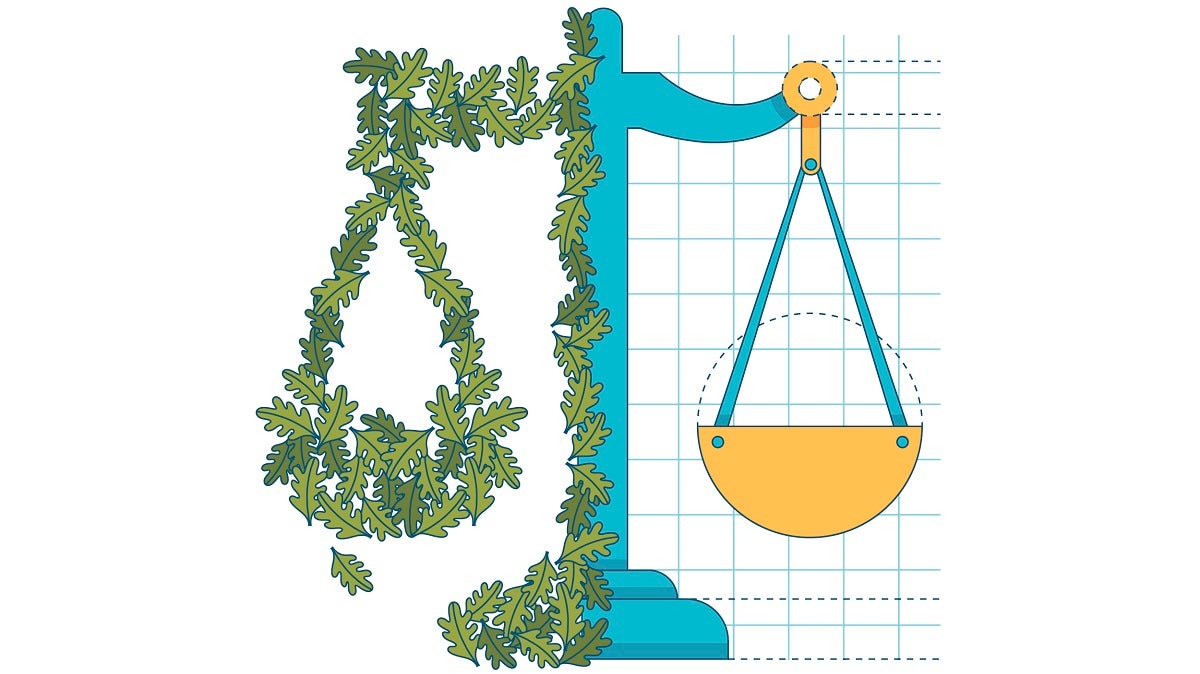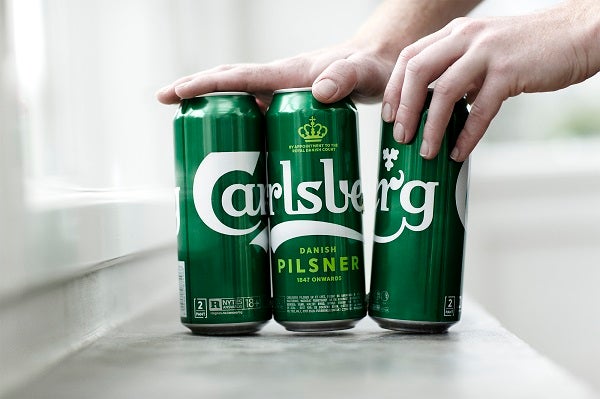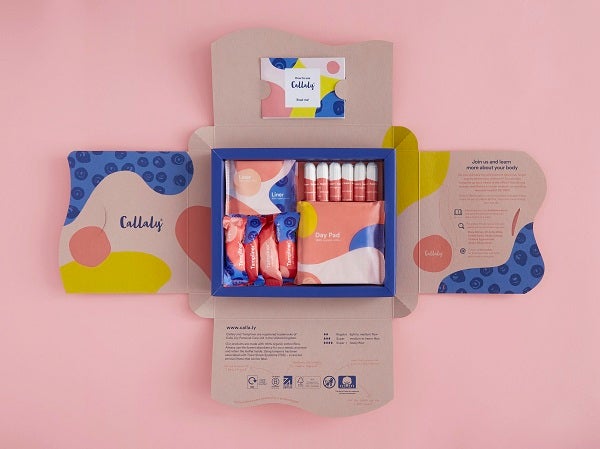
Given our love of online retail, it is not surprising the UK is one of the world’s largest producers of packaging waste, at 2.4 million tonnes a year. The good news is 70 per cent of this is recycled.
While single-use plastics have dominated headlines, the industry’s carbon footprint results from many factors, notably excessive use of cardboard and non-economical production processes. Coronavirus has exacerbated the issue, causing our consumption of disposables to skyrocket and our recycling bins to fill up.
You have to analyse the brand you’re working with and create a ‘design for life’ proposition
Brands have this to contend with, alongside creating original packaging designs that stand out in crowded markets. So which companies are successfully balancing impact and sustainability?

Carlsberg: getting rid of single-use plastic
In 2018, global beer brand Carlsberg launched its Snap Pack, which is a way to connect packs of four cans using adhesive glue, rather than plastic rings. Carlsberg tested 4,000 types of glue before choosing one that burns off in the recycling process.
Pete Statham, sustainability manager at Carlsberg Group and UK, says removing the rings improves user experience and allows the cans to showcase branding.
“I don’t think it has to be a compromise,” he says. “The plastic rings detract from the consumer experience. Now, the packs are more satisfying to open as they snap apart and we’ve been able to do interesting things, like create a banner effect across the cans.”

Statham says the biggest challenge in rethinking the packaging design has been lack of space for messaging. “The more space you reduce, the harder it is to communicate what you’ve done. We tackled this through out-of-home marketing,” he adds.
Carlsberg is also developing its green fibre bottle, a recyclable, biodegradable bottle made from wood fibre. It still contains a plastic inner lining, which will be stripped out before launch. It retains Carlsberg’s distinctive green, and the logo and slogan have been embossed.
“The end vision is for it to be completely polymer free,” says Statham. “When it’s finished, it will have a super low carbon footprint.”
Callaly: biodegradable and graphic design led
Feminine care brand Callaly hired agency Design Bridge to produce “uplifting, desirable packaging”, and steer away from the “boring, sanitised” look normally associated with period products, says Jody Elphick, head of brand and content at Callaly.
It uses a vibrant palette of yellow, blue and pink, and its outer packaging is a discreet box that fits through a letterbox. All the packaging is sustainable; the cardboard gets recycled and the wrappers are industrially compostable, meaning they go in the general waste bin and break down naturally but can also become compost when heated in industrial facilities.

The main challenge was sourcing materials. “It was tricky finding compostable wrappers we could print on,” says Elphick. “We ended up cutting into large rolls of patterned material, so every product looks slightly different. But this variation has actually created a selection box of lovely shapes and colours.”
While brands like Callaly believe they are creating solutions, waste disposal is not keeping up. “The UK’s recycling infrastructure is not set up to deal with compostable plastics. Having a clear system that’s easy for consumers to understand will be imperative,” says Elphick.
Wagamama: reusable, recyclable takeaway packaging
Agency Pearlfisher helped Wagamama improve the recyclability of its takeaway packaging. Its takeout offering aims to replicate the restaurant experience, providing consumers with plastic bowls that can be washed and reused up to 100 times at home, says Jen Newell, head of realisation at Pearlfisher. Once exhausted, they can be recycled. The design team tested several different materials for food quality preservation and temperature retention.

Originally black, the bowls were changed to grey in 2019, making them easier to recycle, as black plastic often goes undetected by scanners at recycling plants. Outer cardboard sleeves have been replaced with smaller inserts that slot into the lid.
Newell says there is no generic approach to packaging design, with solutions assessed on a brand-by-brand basis and constantly reviewed. “You have to analyse the brand you’re working with and create a ‘design for life’ proposition,” she says. “The infrastructure isn’t there yet for compostables; only a small number of local authorities recycle them and they can take ages to break down. The environmental impact can be worse than using recyclable plastic.”
Petit-Pli: packaging design with a new purpose
Children’s clothing brand Petit-Pli takes aim at the wasteful nature of fashion. The clothes are made from recycled, pleated fabric that expands as a child grows, meaning one item can last up to four years. Agency NB Studio designed the brand identity and packaging, continuing the pleat and fold concept throughout.
The clothes are wrapped in tissue paper, which are a leftover product of the fabric pleating process, and arrive in a cardboard box that can be refolded to create a child’s jetpack toy.
“The last thing you want is for a sustainable product to arrive in something that you instantly throw away,” says Sam Pittman, Designer at NB Studio. “Having a reusable box goes hand-in-hand with the clothes’ longevity.”

One of the biggest challenges was sourcing a printer: “We had to balance an origami design with cardboard that was thick and robust enough to go through the post — most designs like this are done on very thin paper. Changing perceptions of what sustainable packaging should look like was tricky.”
He tackled this by prototyping and testing. “I approached the printer with handmade mockups, to show them proof of concept. I also posted boxes to friends, to check they wouldn’t get destroyed and the clothes would stay intact.”
Loop: a circular system of reusable packaging
Loop, owned by TerraCycle, provides a sustainable alternative to single-use packaging. Consumers “rent” packaging; they buy their favourite brands from the Loop website with an additional deposit and receive products in containers made from steel, aluminium, glass and durable plastic. Loop then picks up the empty reusables, cleans and redistributes them back to manufacturers to refill, while consumers get their deposit back.

Tom Szaky, founder and chief executive at TerraCycle, says this shift from disposable to “borrowed” could enable more investment and innovation in packaging design. “This allows brands to think about higher-quality materials and unique design improvements,” he says. “Many of our partners, like Coca-Cola and evian, say their food and drink taste better in glass.”
Häagen-Dazs, distributed by Loop, has used this theory to improve its packaging, marrying “reusability, beauty and functionality”, says Szaky. The new stainless steel carton is more durable, has a stronger seal, enables the ice cream to stay frozen longer and has a concave bottom, designed for use with a spoon. Japanese food brand Ajinomoto is investigating temperature and humidity sensors to tell consumers how fresh their food is.
“This is absurd with disposable packaging, but affordable when borrowed,” says Szaky. “If packaging shifts in this way, the possibilities are endless.”

Given our love of online retail, it is not surprising the UK is one of the world’s largest producers of packaging waste, at 2.4 million tonnes a year. The good news is 70 per cent of this is recycled.
While single-use plastics have dominated headlines, the industry’s carbon footprint results from many factors, notably excessive use of cardboard and non-economical production processes. Coronavirus has exacerbated the issue, causing our consumption of disposables to skyrocket and our recycling bins to fill up.
